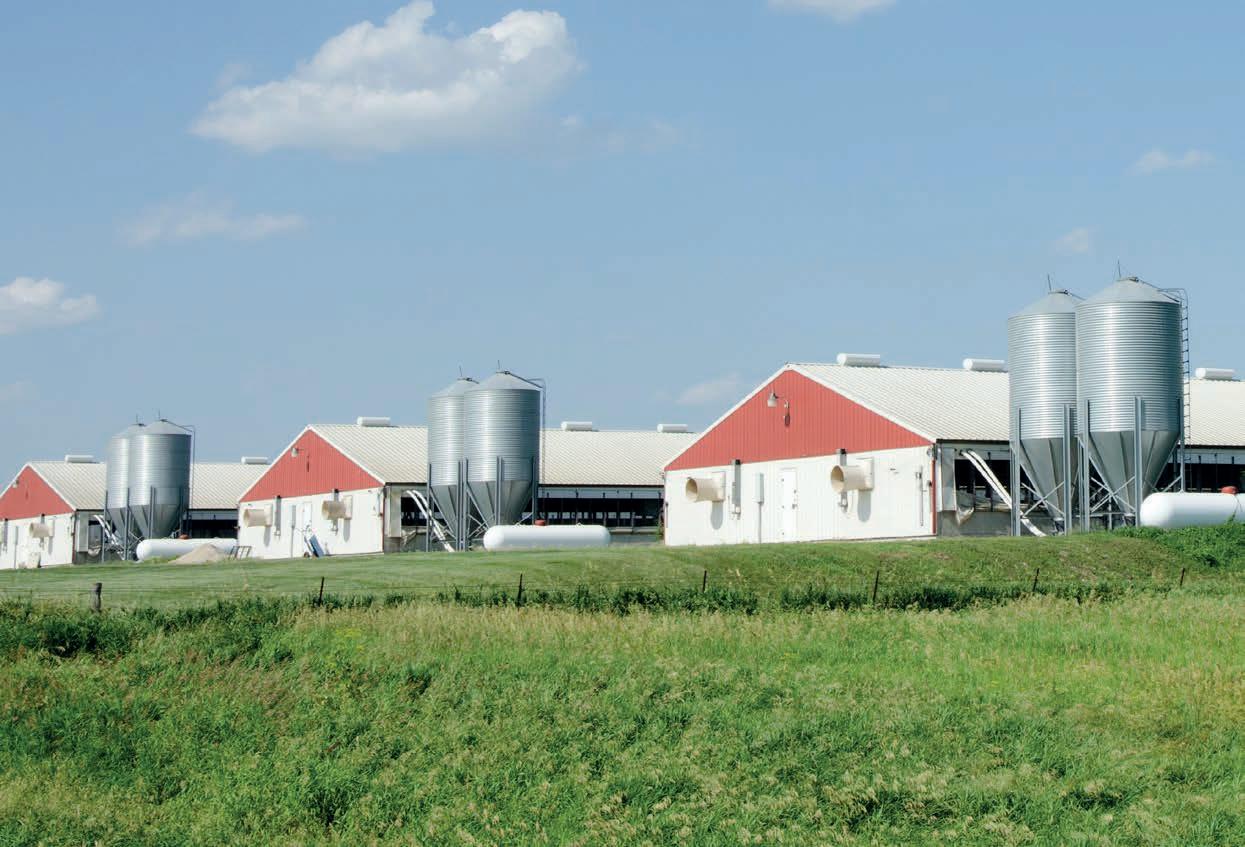
4 minute read
Patterns of the egg industry in the Emerging Market Countries between 2007 and 2017
The development of the egg imports by the EMC – Part 4
The last part of the report will analyse the development of egg imports by the EMC between 2006 and 2016.
Between 2006 and 2016, egg imports by the 37 EMC grew much slower than exports, this is the case in the absolute as well as in the relative increase. The absolute import volume grew from 253,044 t in 2006 t to 557,628 t in 2016 or by 120.4%; the export volume in contrast by 534,094 t or 136.2% in the same time period (see also Table 10). The share of the EMC in the global import volume increased from 21.0% to 26.5%; their contribution to the global egg export volume from 31.8% to 46.5%.This documents, as was already mentioned, that many EMC were able to meet the growing domestic demand by intensifying their egg production.
The fifteen leading EMC in egg imports in 2006 and 2016 are listed in Table 14. They shared 20.6% in the global import volume in 2006 and 26.3% in 2016. The contribution of the other 22 EMC with only 0.4% respectively 0.2% was extremely low. In 2016, six countries did not import any eggs and 13 fewer than 100 t.
A detailed analysis of the changes in the composition and ranking of the leading countries reveals that Venezuela was substituted by Bulgaria, all other countries were identical. Their ranking changed considerably, however. China was still in a top position, followed by Russia which replaced the Czech Republic. It is obvious that Western Asian countries imported higher volumes in 2016 than in 2006. A growing demand and limited possibilities to increase the domestic production were the main steering factors behind this development. Several Eastern European countries and Greece were obviously forced to raise their import levels in consequence of the banning of conventional cages and the transformation to alternative housing systems from 2012 on. Russia was not able to meet the growing demand by domestic production. The country expanded its broiler production considerably and reduced its initiatives in the egg sector for several years. Despite the growing production, Mexico was forced to increase its egg imports because of several AI outbreaks and a resulting shortage of shell eggs for consumption. The fact that Bulgaria is listed in top positions regarding the growth of egg exports and imports is surprising. In 2016, eggs were mainly imported from Poland and Romania and exported to Greece. It was obviously attractive to import cheap eggs from Romania and to sell them with profit to Greece. The spatial pattern of egg imports by the EMC in 2016 is documented in Figure 4.

Figure 4 – Egg imports by Emerging Market Countries in 2016.
In Table 15, the ten EMC with the highest absolute growth of their egg imports are listed. Russia and China showed the highest absolute increase, followed by Mexico and the United Arab Emirates. The highest relative growth rates were to be found in Russia, Saudi Arabia and Mexico.
Eight EMC imported less than 1,000 t of shell eggs in 2016; only one, South Africa, did not import any eggs. Twelve countries imported fewer eggs in 2016 than in 2006. The seven countries with the highest absolute decrease of their import volume are listed in Table 16. The Czech Republic showed the highest absolute reduction with almost 12,900 t. The country was able to switch to alternative housing systems in a comparatively short time and to cover most of the demand by domestic production.
Summary
The preceding analysis of the dynamics in egg trade by the EMC could document that the trade volumes grew much slower than production. This indicates that most of the EMC were able to meet the increasing domestic demand by intensifying their production. Exports grew even faster than imports, documenting that many EMC successfully modernized their production systems and were also able to generate a production surplus over demand. An indicator for this statement is the fact that the regional concentration in exports was considerably higher than in imports. In exports, the newcomers Turkey and Poland were able to share over 26% in the global export volume. In imports the regional concentration was lower and more evenly distributed. China and Russia were the two EMC with the highest import volumes.
Data source, references and further reading
El Hedi Arouri, M.; Boubaker, S.; Khuong Nguyen, D. (2014): Emerging Markets and the Global Economy: A Handbook. Oxford, UK: Academic Press.
Emerging Market: https://en.wikipedia.org/wiki/Emerging_market (retrieved: May 2020).
FAO database: http://www.fao.org/faostat.
Kvint, Vladimir (2009): The Global Emerging Market: Strategic Management and Economics. New York, London: Routledge.
Vercueil, Julien (2012): Les pays émergents. Brésil - Russie - Inde - Chine... Mutations économiques et nouveaux défis. Paris: Bréal, 3rd Ed.
Windhorst, H.-W.: A projection of the future dynamics in global egg production. In: Zootecnica international 40 (2018), no. 7/8, p. 24-26.
List of Emerging Market Countries
Argentina, Bangladesh, Brazil, Bulgaria, Chile, China, Colombia, Czech Rep., Egypt, Greece, Hungary, India, Indonesia, Iran, Israel, Korea, Rep., Malaysia, Mauritius, Mexico, Nigeria, Oman, Pakistan, Peru, Philippines, Poland, Qatar, Romania, Russia, South Africa, Saudi Arabia, Taiwan, Thailand, Turkey, UAE, Ukraine, Venezuela, Viet Nam.










